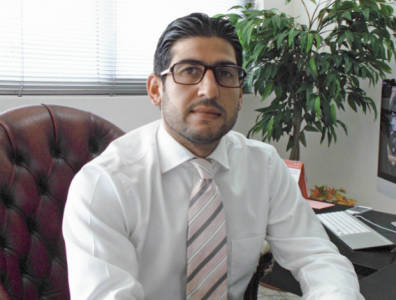
in figures
Nigerdock’s fabrication for the Egina project14,000-16,000 tonnes
Nigerdock floating dock capacity 5,000 dead-weight tonnes
Nigerdock's dry dock capacity25,000 dead-weight tonnes
The right criteria: The strides made in the tendering process in Nigeria
January 8, 2015The executive director of Nigerian energy conglomerate Jagal Group, Manssour Jarmakani, speaks to TOGY about the strides being made in the oil and gas industry’s tendering process, as well as the challenges and opportunities related to manufacturing. The company’s subsidiaries include the fabrication yard Nigerdock and the engineering, procurement, construction and installation company NigerStar.
How would you evaluate the efficiency of the tendering and bidding process in Nigeria’s oil and gas industry?
In an engineering, procurement, construction and installation tender, the operator and the National Petroleum Investment Management Services work together throughout the bid evaluation process. Operators are working on behalf of the Nigerian government, as the latter is the majority shareholder in major upstream developments through the Nigerian National Petroleum Corporation.
The real bottleneck in the tendering process is related to time, as the process takes too long in Nigeria. One of the biggest causes of this is the availability of manpower resources on the side of the Nigerian National Petroleum Corporation and National Petroleum Investment Management Services. There is a need to find opportunities where they can combine technical and commercial submissions at the same time while working closer with international oil companies to eliminate redundancies and inefficiencies.
The key driver of the tendering process is the final investment decision (FID). We have seen examples where, without a FID and funding approval, tenders have dragged on for four to five years. Once the FID is in place, we have seen tenders for projects develop very quickly.
What improvements have been made in the pre-evaluation of bidding companies?
One of the major improvements in the tendering process is that the technical criteria has become more stringent and is removing companies that do not have sufficient capacity relative to the contract they are bidding for. Bidders should only be invited if they are technically qualified companies with the right levels of Nigerian content.
It is particularly important that capacity issues are addressed. For example, if there is a gap between what a company can perform vis-à-vis the scope of work it is bidding on, there should be at least proof that the company is investing in bridging the gap. This helps to spur on investment in the private sector and ensure continued capacity building, while also avoiding issues whereby contracts are awarded to companies that are unable to do the job.
Is there room for co-operation amongst Nigerian fabrication yards in order for them to continue to increase the complexity and volume of in-country fabrication?
If you look at global market norms for floating production, storage and offloading vessel integration, the integration process happens at the manufacturing site. The same management team that does the fabrication also carries out the integration, reducing both risk and cost.
It makes sense for Nigeria’s fabrication industry to move in a direction where manufacturing for major projects is divided between various operators in the local market, and for integration to happen at one centralised site in Nigeria. The centralised yard does not need to sub-contract the work to the other yards necessarily, but rather can serve as a lead manufacturer and represent the sub-contracting yards in an integrated project team.
What is the medium-term outlook for growth in Nigeria’s fabrication industry?
Nigerian content law dictates that at least 50 percent of manufacturing for any upstream oil and gas project should be undertaken in the country. The industry has shown its capacity to deliver, but there are only a few shipyards that have the capacity to do complex floating production, storage and offloading modules and large-scale work on megaprojects, such as the Egina, Usan or Bonga Southwest fields.
If the level of activity in the oil and gas industry remains the same, there is sufficient capability within the existing yards to increase their capacity, as not all of them are full.
How cost-competitive is the local fabrication industry?
There are two challenges to fabrication costs in Nigeria. Firstly, there is a lack of a stable and cost-effective power source. Secondly, the workflow in Nigeria is inconsistent, which presents difficulties in formulating a strategy whereby you can foreseeably repay a sizeable investment over several projects.
When activity is sporadic, with FIDs not being made and tenders not being awarded, you do not know when the next project will come. This affects the training and hiring of personnel, who you might end up having to re-hire and train again, leading to an increase in costs. A long-term strategy thus becomes difficult.
Read our latest insights on:


 Nigeria
Nigeria 














